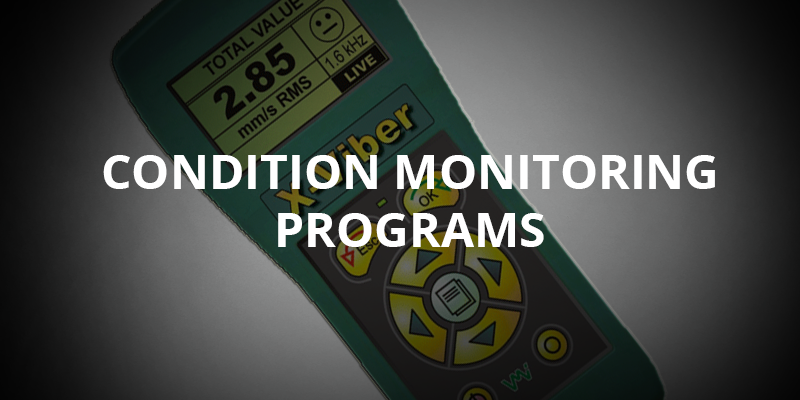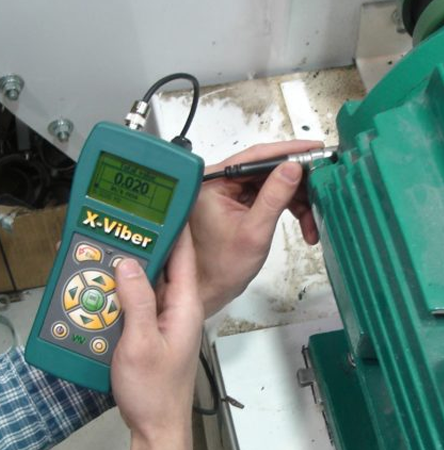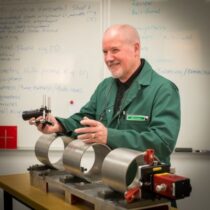
Running Softfoot and Resonance Checks
One of the biggest issues in the machinery installation process is that many machines are installed but they are left under strain due to the fact that they are bolted to distorted bases or frames. The problem is that the machines feet and the base are not in the same plane.
In other words, the feet sit unevenly on the base. When the feet are tightened down the result is that the machines casing is distorted. In the case of an electric motor, this distortion can alter the air gap and create a vibration which in time will cause the motor to fail prematurely. If the distortion is severe, it can even deflect the shaft, causing a greater vibration.
 PHOTO (left) – X-Viber used in Condition monitoring programs.
PHOTO (left) – X-Viber used in Condition monitoring programs.
Another issue, that is very similar to distorted bases, is distorted machine feet. We use the term soft foot to describe foot problems, but this is incorrect. The word is actually a description of the feeling you get when you are tightening the machines foot. Although the foot appears to be down, you can still tighten it and pull it down some more. It feels soft or spongy. If you feel this, the foot is distorted.
To find and correct this problem we can quite easily measure it with a feeler gauge. We have to make sure that we measure under each corner of the foot so that we can make the proper correction. We can do this as a rough measurement with the bolts loose, tighten them and then re-do each foot, tightening and loosening each foot in turn.
When the foot is distorted it will spring up on one or more of the corners as you loosen the bolt. We can then make the correction with pieces of shim being very careful, because at this point we can create a problem just as easily as we can correct it. The problem is we cannot do this when the base or frame is twisted. Remember, there is a certain amount of flexibility in a machines casing. Its own weight will try to pull itself down onto the twisted base, especially on large machines. Yes, if the frame is distorted enough you will find some gap, but not all of it. You can actually use vibration to find this kind of problem.
 Simply locate the highest reading (obviously with the machine running) in the vertical or horizontal plane and watch the reading as you loosen and tighten each of the foot mounting bolts.
Simply locate the highest reading (obviously with the machine running) in the vertical or horizontal plane and watch the reading as you loosen and tighten each of the foot mounting bolts.
You may be surprised at what you see. Sometimes the reading will go down. This is because you have taken the strain off the motor, in other words, the motor is distorted and you are easing the strain. Many call this foot resonance. The question is where is the problem? Is it the foot or is it the base? Well, you will be able to find the distorted foot issue as described above using a simple shaft alignment system to measure the twist in a base offered by Benchmark. If you require such a system and would like more information regarding your problem or application e-mail me at john [at] benchmarkpdm.com and I will e-mail back the procedure.
PHOTO (above right) – New wireless E-series Easy-Laser E710 shaft alignment tool, using vibration program as part of the machines PM.
About Author



0 comments
Write a comment